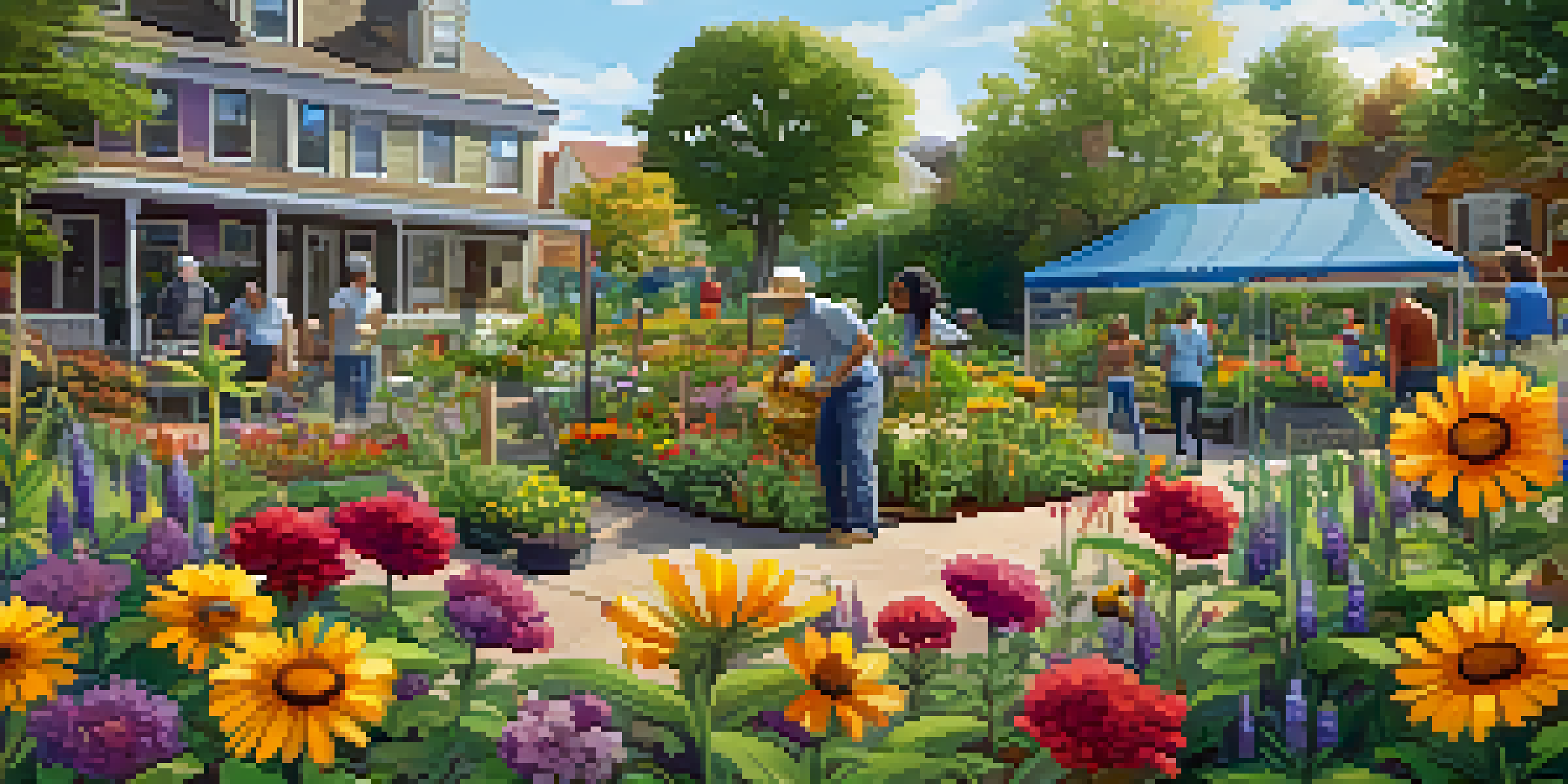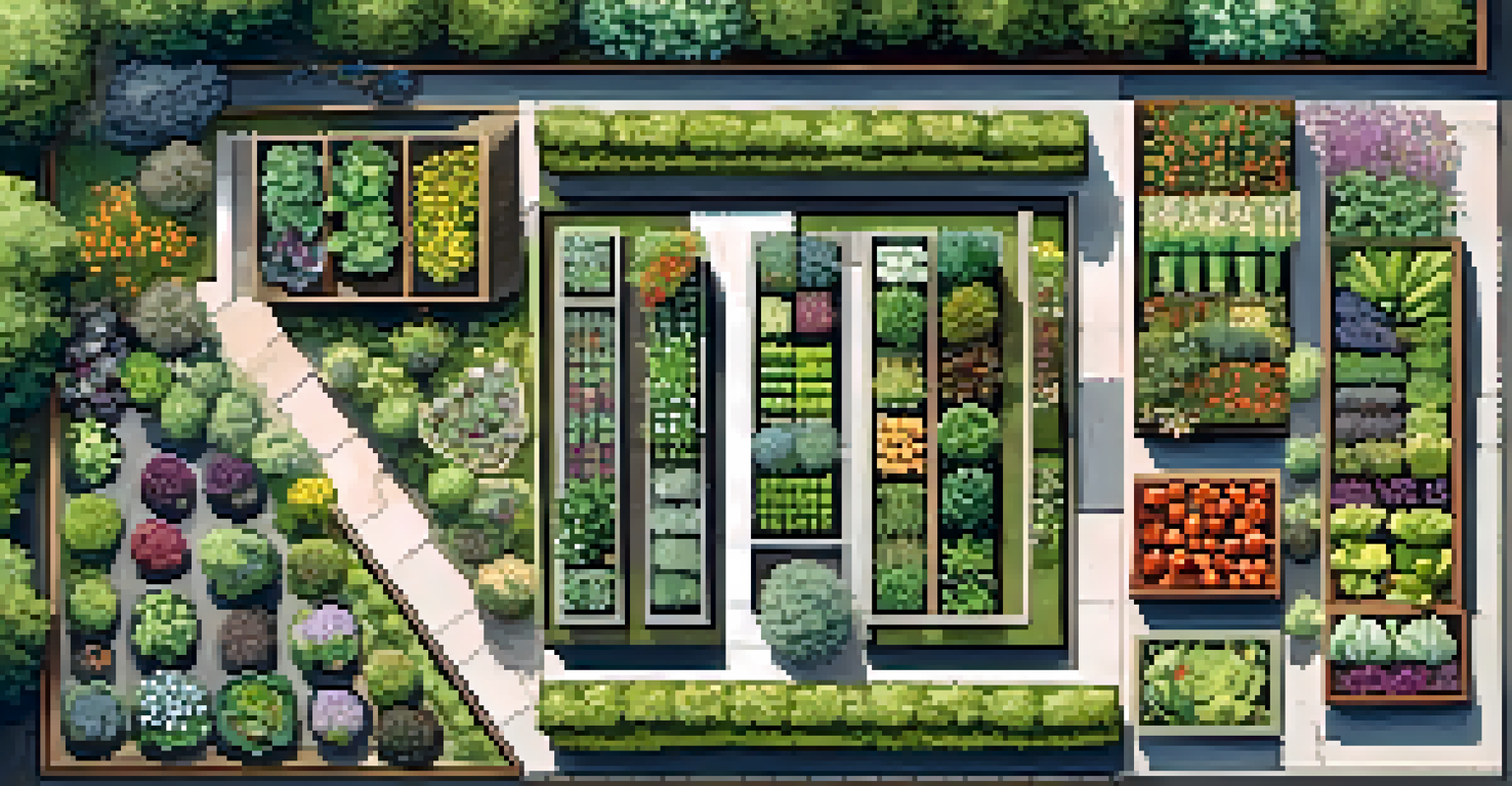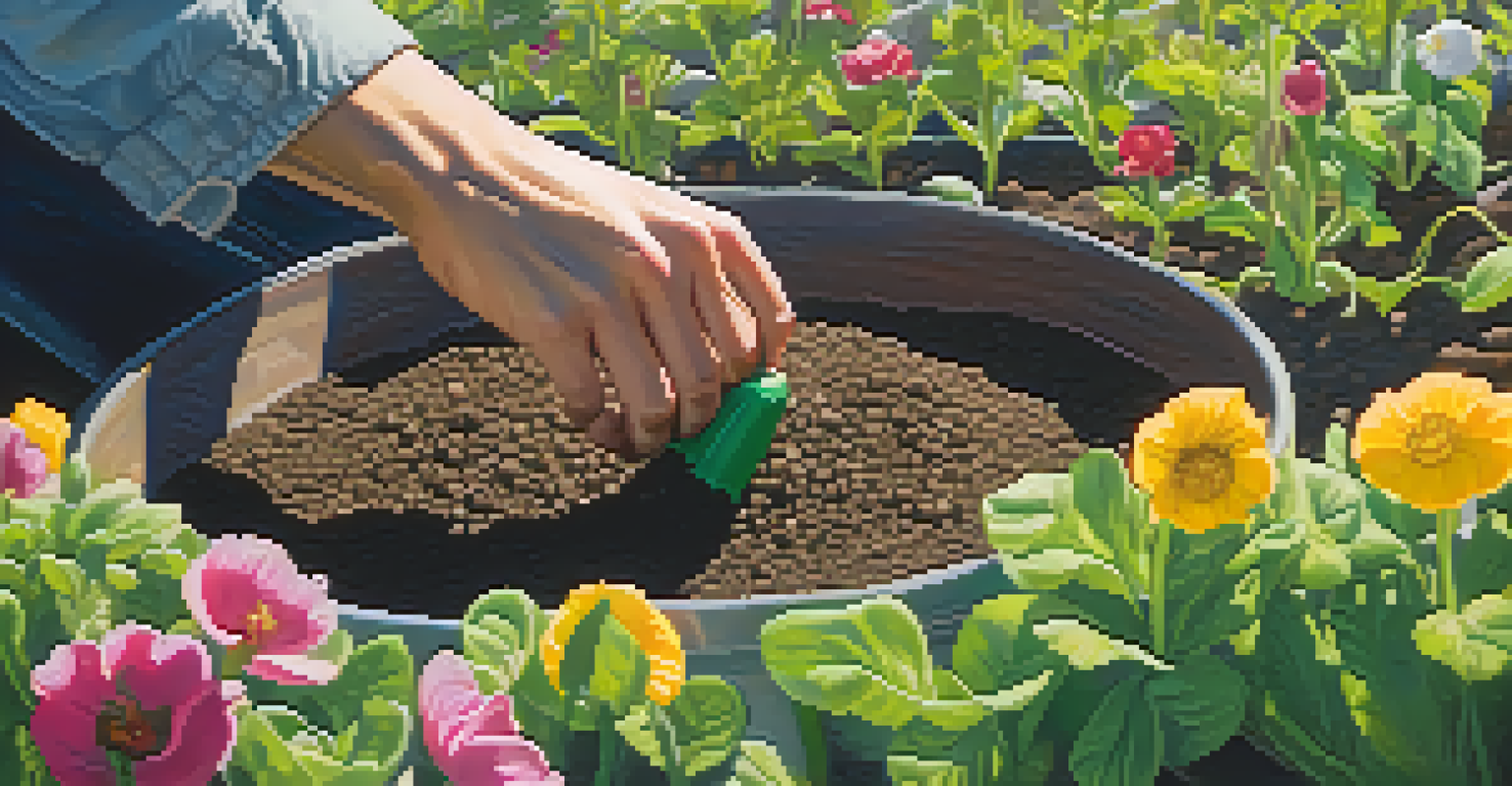Promoting Biodiversity Through Community Gardening Efforts

Understanding Biodiversity and Its Importance
Biodiversity refers to the variety of life on Earth, including different species of plants, animals, and microorganisms. It plays a crucial role in maintaining ecosystem health, providing essential services like pollination, nutrient cycling, and climate regulation. A rich biodiversity ensures resilience against environmental changes, making it vital for the sustainability of our planet.
Biodiversity is the foundation of ecosystem services that we rely on for our survival.
Community gardens serve as microcosms of biodiversity, cultivating various plant species and attracting wildlife. These gardens can transform urban landscapes into vibrant ecosystems, supporting not just native plants but also beneficial insects and pollinators. By promoting a diverse range of flora, community gardens contribute to a healthier environment and encourage local wildlife populations.
Moreover, enhancing biodiversity in community gardens can lead to improved crop yields and pest management. When a variety of plants co-exist, they create a balanced ecosystem that naturally curbs pests and diseases. This interconnectedness highlights the importance of fostering biodiversity at the local level, where community efforts can have a significant impact.
The Role of Community Gardens in Local Ecosystems
Community gardens are more than just spaces for growing food; they act as vital links in local ecosystems. These gardens provide habitats for various species, contributing to a diverse urban environment. They also create a network of green spaces that support wildlife corridors, allowing animals to thrive amidst urban development.

Through thoughtful planning, community gardens can integrate native plants that are crucial for local wildlife. For example, planting native flowers can attract pollinators like bees and butterflies, which are essential for the health of our ecosystems. This not only enhances biodiversity but also fosters a stronger connection between residents and their local environment.
Biodiversity Boosts Ecosystem Health
A rich biodiversity is essential for maintaining ecosystem resilience and providing crucial services like pollination and climate regulation.
Furthermore, community gardens can help mitigate environmental issues such as urban heat islands and stormwater runoff. By incorporating green spaces into urban areas, these gardens improve air quality and reduce the effects of climate change. Thus, they play a fundamental role in enhancing the ecological health of cities.
Engaging Communities Through Gardening Initiatives
Community gardening initiatives encourage participation and collaboration among residents. By coming together to plant and maintain gardens, individuals build relationships and foster a sense of belonging. This engagement not only strengthens community ties but also instills a shared responsibility for the environment.
The greatest threat to our planet is the belief that someone else will save it.
These initiatives often involve educational programs that teach participants about sustainable gardening practices and biodiversity. Workshops on topics like composting, native plant gardening, and organic pest control empower individuals to make informed choices. This knowledge transfer is essential for cultivating a culture of environmental stewardship within communities.
Moreover, involving diverse community members in gardening efforts ensures that various perspectives and ideas are considered. This inclusivity can lead to innovative gardening practices that are tailored to the local environment, further enhancing biodiversity. By working together, communities can create gardens that reflect their unique identities and values.
Promoting Native Plants in Community Gardens
Incorporating native plants into community gardens is a powerful way to support local ecosystems. Native plants are adapted to the local climate and soil, requiring less water and maintenance compared to non-native species. This not only reduces the gardener's workload but also minimizes the need for chemical fertilizers and pesticides.
Native plants also provide essential habitat and food sources for local wildlife. Birds, bees, and butterflies thrive in environments where they can find familiar plants, ensuring their survival and promoting biodiversity. By prioritizing native species, community gardens can actively contribute to the conservation of local flora and fauna.
Community Gardens Enhance Local Wildlife
Community gardens act as vital habitats, supporting diverse species and creating networks of green spaces that benefit urban wildlife.
Additionally, showcasing native plants in community gardens educates the public about their importance. Residents learn to appreciate the beauty and ecological value of these plants, fostering a deeper connection to their local environment. This awareness can inspire further conservation efforts beyond the garden itself.
Education and Awareness: The Heart of Gardening Efforts
Education plays a crucial role in community gardening initiatives, as it equips individuals with the knowledge necessary to foster biodiversity. Workshops, classes, and community events can teach participants about the significance of biodiversity and sustainable gardening practices. This foundation of knowledge empowers residents to be effective stewards of their local environment.
Awareness campaigns can also highlight the benefits of community gardens beyond just food production. By showcasing success stories and sharing the positive impacts on biodiversity, communities can inspire more residents to get involved. This collective action can lead to the creation of more gardens, amplifying the benefits for local ecosystems.
Social media and community outreach efforts serve as valuable tools for spreading awareness. By sharing photos, tips, and experiences, residents can engage others and create a ripple effect of interest in community gardening. This digital connection can enhance community bonds and encourage more people to participate in gardening initiatives.
Challenges and Solutions in Community Gardening
While community gardening offers numerous benefits, it also faces challenges that can hinder biodiversity efforts. Issues such as limited space, funding constraints, and varying levels of gardening knowledge can create barriers to successful initiatives. Addressing these challenges requires creativity, collaboration, and community support.
Creating partnerships with local organizations, schools, and businesses can help overcome these obstacles. These collaborations can provide resources, funding, and expertise to strengthen community gardening efforts. By pooling resources and knowledge, communities can work together to create thriving gardens that enhance biodiversity.
Education Fosters Sustainable Practices
Educational initiatives within community gardens empower residents to adopt sustainable gardening practices, promoting biodiversity and environmental stewardship.
Additionally, fostering a culture of mentorship within gardening communities can help bridge knowledge gaps. Experienced gardeners can guide newcomers, sharing best practices and encouraging sustainable gardening techniques. This mentorship not only builds skills but also cultivates a sense of community ownership and pride.
The Future of Community Gardening and Biodiversity
As urbanization continues to rise, the future of community gardening is more important than ever. These green spaces offer a refuge for biodiversity amidst concrete jungles, making them essential for ecological health. By investing in community gardening initiatives, we can secure a brighter future for both people and the planet.
The growing interest in sustainable practices and local food systems is fueling a resurgence in community gardening. More people are recognizing the importance of growing their own food, which inherently supports biodiversity. This trend highlights the potential for community gardens to play a significant role in food security and environmental conservation.

Looking ahead, communities must continue to advocate for and invest in gardening initiatives. By prioritizing biodiversity in these efforts, we can create resilient ecosystems and vibrant communities. Together, we can plant the seeds for a sustainable future, reaping the benefits of enhanced biodiversity for generations to come.